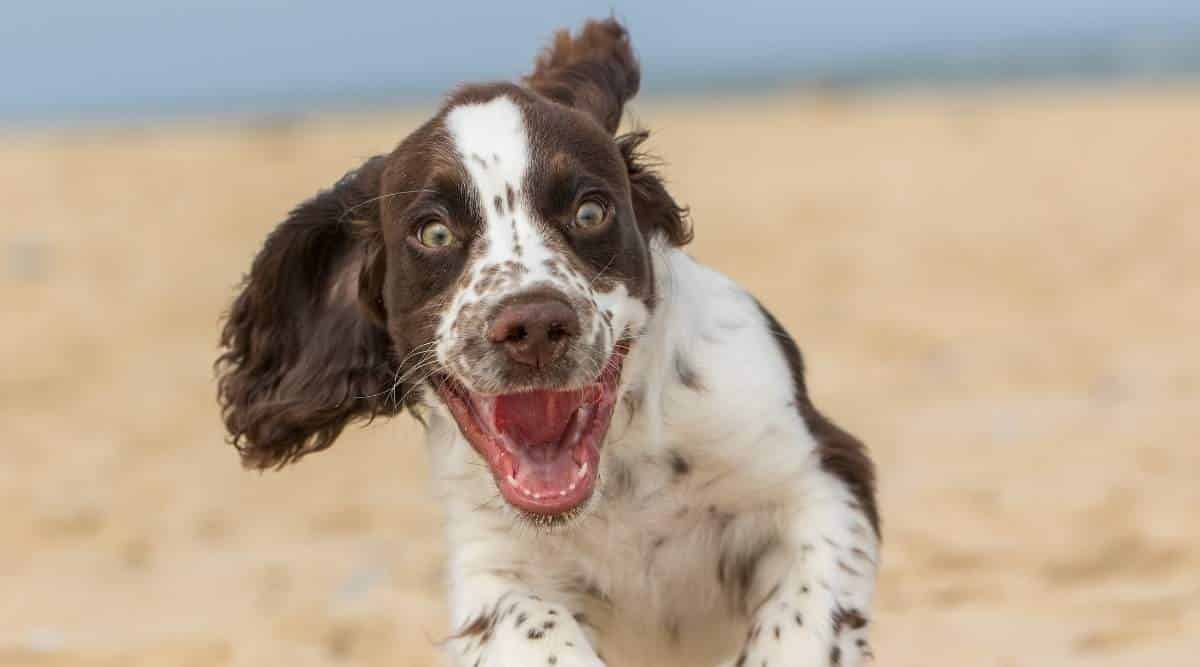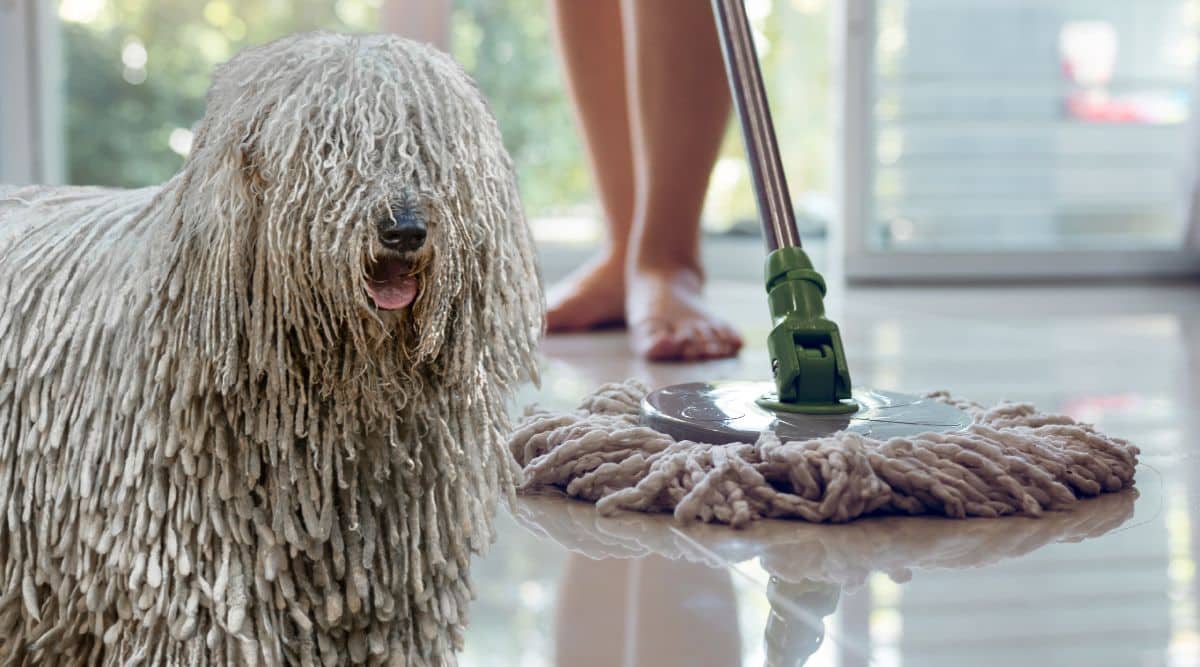Xoloitzcuintli Breed Information: Breed Characteristics, Temperament & More
When you purchase through links on our site, we may earn a commission. Here’s how it works.
Most modern canines can trace their common ancestors back to early European breeds. The Xoloitzcuintli may be directly related to primitive dogs, which first came to the continent about ten thousand years ago with human migration, but the fossil record is not definitive.
Table of Contents
The dog of the Aztec gods, the Xoloitzcuintli, or Xolo for short, is famous today for his nearly nonexistent, low-shedding coat. Once known as the Mexican Hairless, the Xoloitzcuintli is the National Dog of Mexico. Archaeological evidence shows that ancient people probably believed them to be protective against mortal intruders and evil spirits.
Besides their spiritual roles in the cultures of early Mexico, hairless dogs played very practical and helpful roles. They were part of everyday life. They were companions, watchdogs, and even food sources for early people in Mesoamerica. Today, their unique characteristics make them unique and special pet companions.
History
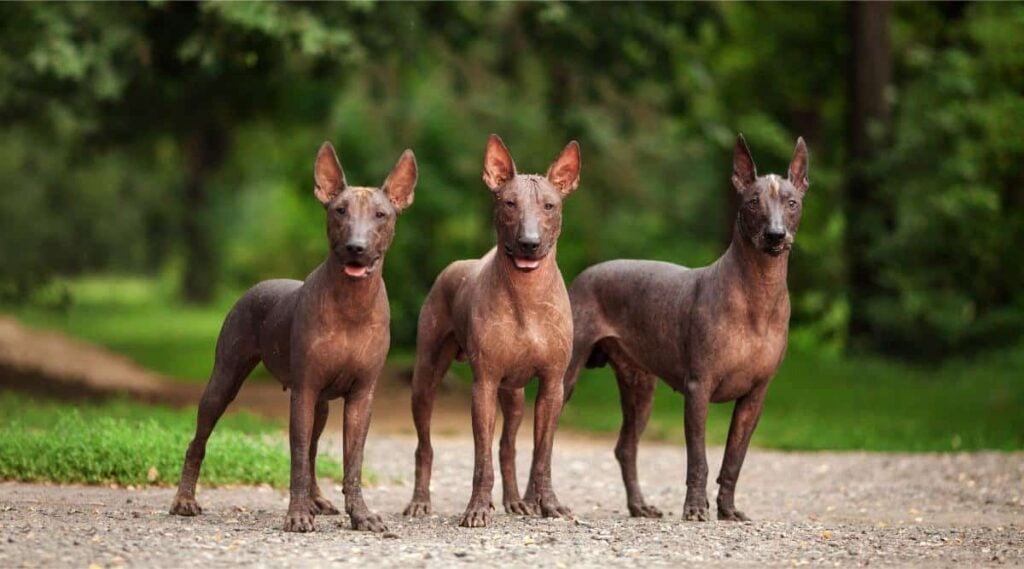
Dogs resembling this modern breed played a significant role in Precolumbian iconography. Although the influx of European breeds subsumed many primitive breeds, archaeological evidence suggests the modern Xolo may have maternal roots in the older population.
The ancient Aztecs and Mayans used the breed as a companion animal, healer, and guide to the Underworld. In Aztec culture, Xolotl, a god with the head of a dog, was the god of lightning and death. Legend states that Xolotl created the Dog of Xolotl to guard the living and guide the souls of the living through Mictlan, the Underworld.
In some cases, dogs were buried alongside their caretakers to help them in the afterlife, but often a statue of a dog was placed with the dead to guide them symbolically. Archaeologists can find these bright red ceramic dog statues in ancient shaft tombs all over Mesoamerica, most notably in the western Mexican state of Colima. These figurines have short, stout, rounded bodies. Many were painted with red slip, a mixture of water and fine clay used to intensify the red coloration of the dogs.
The Colima dog figurines help us understand the relationship between humans and animals in the early Americas. Our modern Western culture sees animals and humans in a hierarchy, with humans at the top. The Mesoamerican dogs had a more fluid relationship with people and were sometimes seen as equals – individuals who served essential roles and functions in everyday life.
The people of ancient Mexico had a diet based heavily on plant matter, but to augment their protein intake, they raised and consumed dogs, turkeys, and ducks for meat. Not all canines were bred as sources of food. Others were bred as companion animals, and others for ritual sacrifice. Dogs were used to guard, transport goods, and comfort the ill with their warm bodies.
Temperament
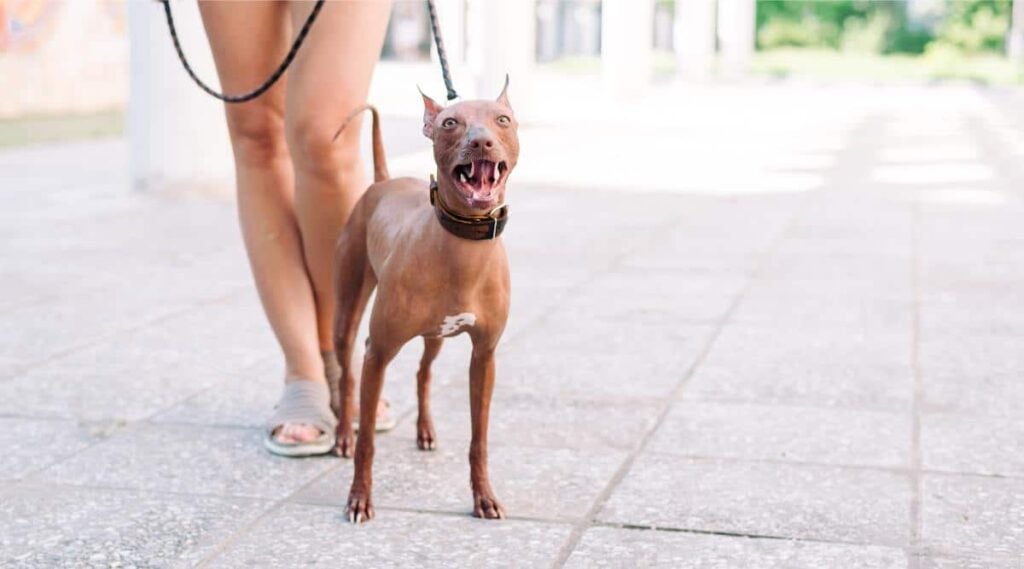
They don’t bark excessively or alert judiciously. Xolos are affectionate and upbeat companions with their families and are calm within the home. A Xolo’s bond to his person is strong, so he should be socialized with other people to handle new situations appropriately. Because they’ve retained wild traits compared to many other companion breeds, they crave feeling like part of a pack. They will bond with their person as a pack leader and be completely devoted.
Size & Appearance
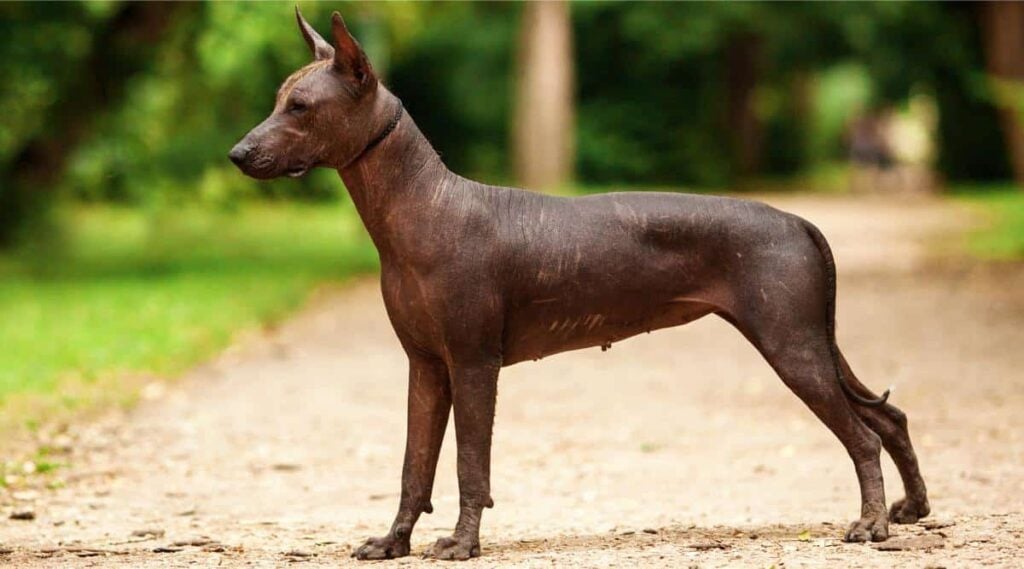
There are two types of Xolos, the hairless and the coated. In each variety, there are three sizes. The toy is the smallest Xolo, standing between ten and fourteen inches at the shoulder. The miniature is over fourteen inches at the shoulder up to and including eighteen inches. Over eighteen inches is the lower limit of the standard size, but over twenty or under ten inches at the shoulder is grounds for disqualification.
The Xolo’s wedge-shaped head shows brow wrinkles when he is alert. He carries his large, elegant ears erect, and his almond eyes can be dark or light depending on his coloration. The hairless variety has unusual dentition. Hairless Xolos may lack some premolars or incisors, while the coated type must have a complete set of teeth.
Coat & Colors
Xoloitzcuintli can either be hairless or coated. The more popular hairless variety has tough, smooth skin that may have coarse, short hair on the top of his head, feet, and tail end. This hairless dog is known for its low-shedding coat, making it popular with families that suffer from mild to medium canine allergies. While no dog is completely hypoallergenic, this one comes close. The coated type has a short, flat coat covering his body.
Xolos’ coats run dark, ranging from black through slate gray or red through bronze. The only place his skin may show wrinkles is on his face. Hairless Xolos need sunscreen or some other form of protection from the sun so their skin doesn’t burn. They may have skin acne as youngsters.
Exercise & Living Conditions
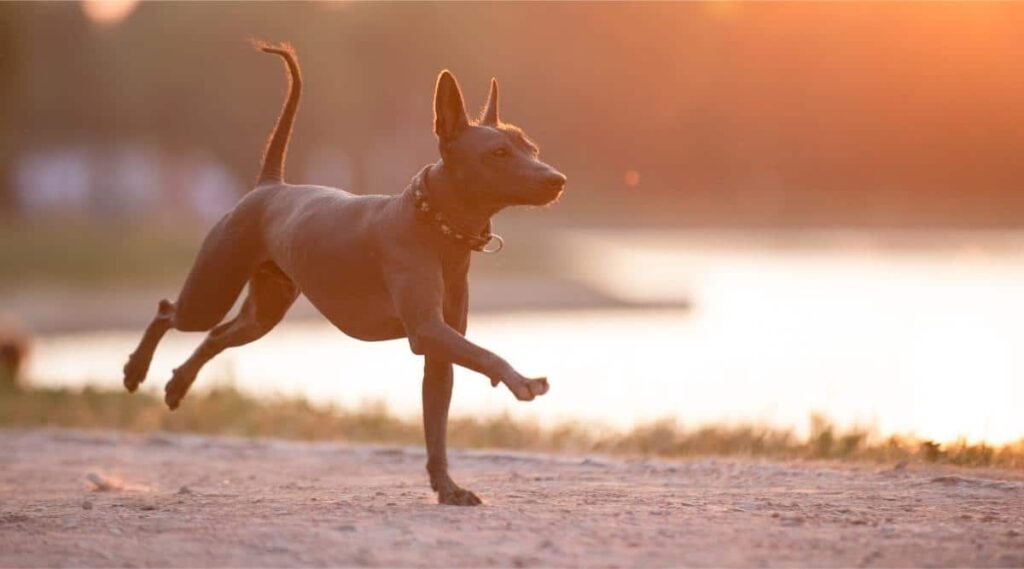
Hairless Xolos are indoor dogs. If they spend time outside, they will need protection from the elements. Not only will you need to take measures to prevent sunburn, but he will need protection from wind and extreme temperatures. Due to his active nature, he will still enjoy a nice jog or walk with his family.
Hairless Xolos require protection from temperature extremes and other weather conditions due to their exposed skin. He has hair, but so little that it won’t help him retain body heat or provide protection from the sun. If he goes outside in cold weather, he will benefit from a well-fitting jacket to give a layer of warmth. Sunscreen formulated for dogs is a good idea when out in the sun for prolonged periods.
Training
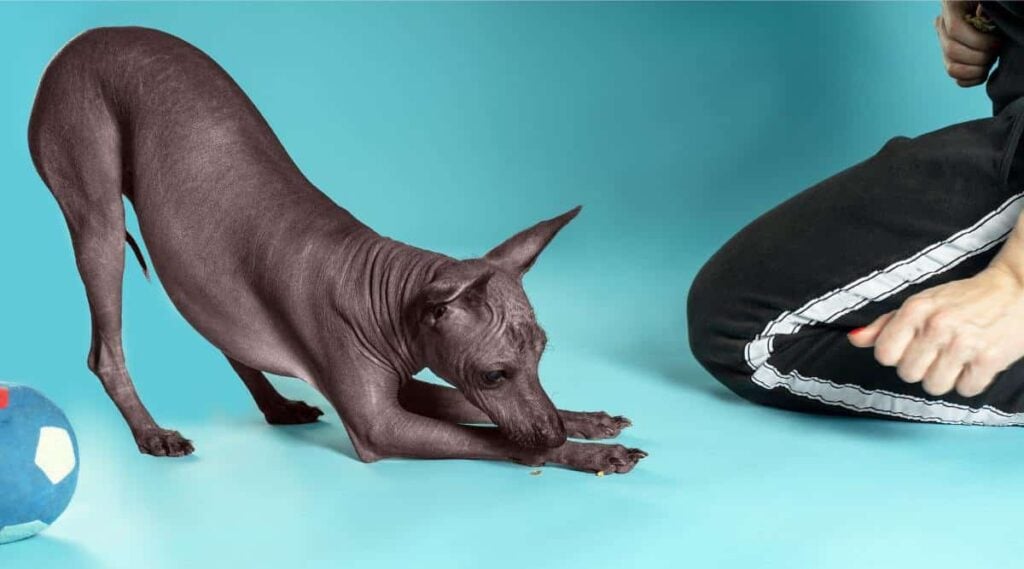
Xoloitzcuintlis have a working dog mentality and take their job as family watchdog seriously. Socialize your Xolo early with other dogs so he’ll be calm around family members, pets, and neighbors. Their athleticism, coupled with intelligence, makes them contenders in agility. Their intelligence and willing temperament make them very trainable, and they respond well to positive reinforcement and gentle redirection.
Health
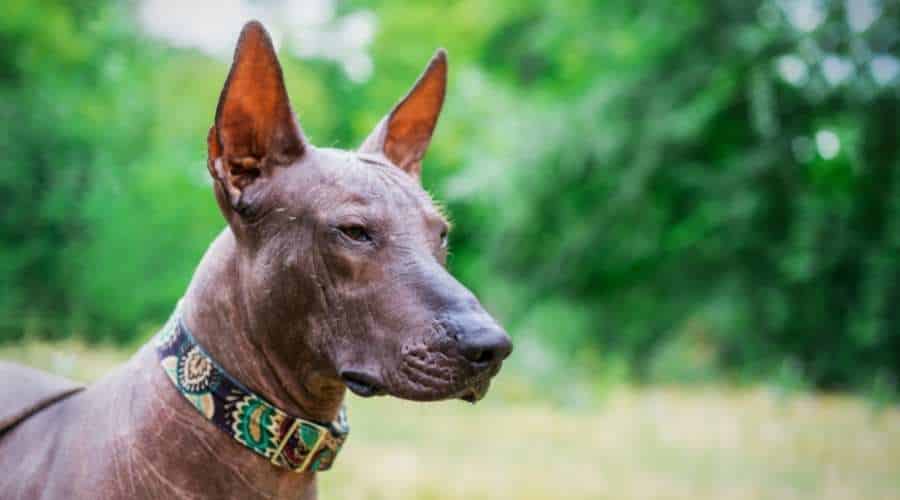
One of their most common health issues is linked to the hairless gene. The same gene that gives them their unique coat type also causes abnormalities in their teeth. Hairless Xolos usually miss teeth, including canines, incisors, molars, and premolars. While some individuals have teeth that are discolored, poorly formed, and in the wrong place, others may lose nearly half their teeth over their lifetime.
Nutrition
A growing puppy has specific nutritional needs. In his first year, choose a formula for your pup that promotes slow but steady growth to help mitigate the risk of musculoskeletal problems like joint dysplasia related to rapid growth. See your veterinarian if your dog is not maintaining body weight or if you suspect, he may have food allergies. Xolos sometimes tend towards gluttony, so monitor his daily intake and body condition. Depending on his size and activity level, your dog may eat between one and two cups of dry dog food per day as an adult.
The most common allergens in commercial dog food are wheat, gluten, eggs, soy, beef, chicken, and lamb. Food allergies in dogs can cause both digestive upset and itchy skin. Your vet may recommend a diet free from the most common allergens as your pup’s skin heals. Ask your vet what brands and formulas they recommend. You should be able to find a blend that keeps your buddy healthy and happy at a price point you can live with.
Feeding the best quality nutrition that you can afford may be more cost-effective in the long run than skimping with a bargain brand. A high-quality kibble including meat protein, fiber, healthy carbs, omega-3 fatty acids, vitamins, and minerals will meet his nutritional needs. You’ll be less likely to add costly supplements, although your Xolo’s skin may benefit from additional omega oils in the diet.
Grooming
Grooming a coated Xoloitzcuintli is like grooming most short-haired dogs. A pass with a hound mitt is enough to keep his hair looking kempt. Hairless Xolos need regular bathing, but their skin does produce natural protective oils. To not strip the skin of this natural protective layer, use mild soap in their bathing routine and apply a moisturizing lotion afterward to be sure their skin remains supple.
Xolos need more attentive dental care than most other breeds. All dogs need to have their teeth cleaned periodically, but Xolos have unusual dentition naturally. Know what your dog’s teeth look like as a baseline so you can tell if he starts to lose teeth. Weekly brushing is a must with a Xolo. Brushing will remove food particles, bacteria, and plaque from his teeth and gumline. Removing the plaque before it hardens and calcifies prevents tarter buildup and potential decay.
Your veterinarian can show you how to brush your dog’s teeth at his first puppy visit. Starting with him as a young pup ensures his comfort with the procedure as he grows. Be sure to use a toothbrush designed for the canine mouth and veterinary toothpaste. If your Xolo cannot tolerate a toothbrush, dental wipes are an alternative until he accepts a proper canine toothbrush.
Breeders & Puppy Costs
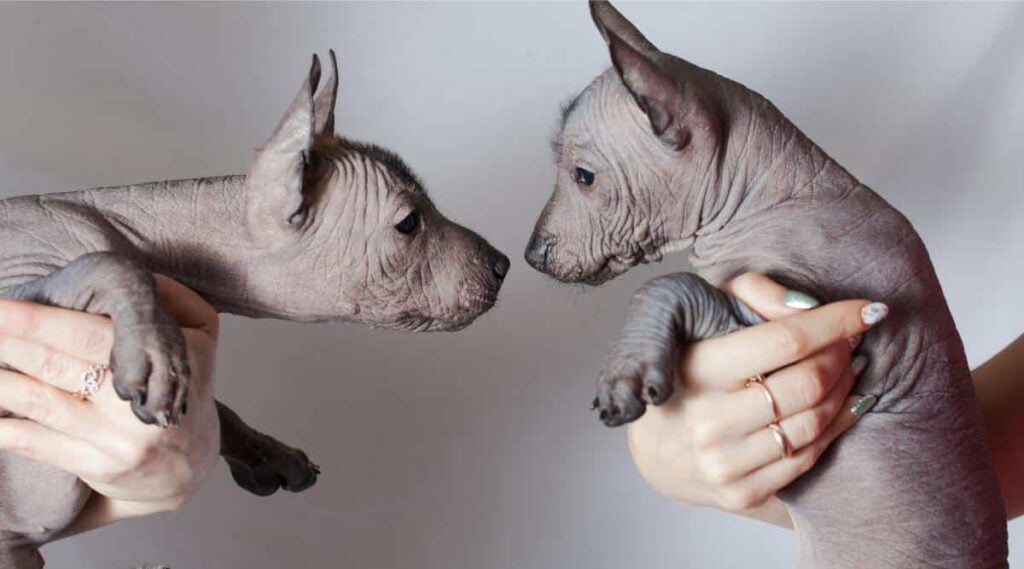
You should expect to pay from $800 to $4,000 for a Xoloitzcuintli from a breeder. Be sure the breeder you choose stands behind the health of their dogs.
In general, this breed is:
- Intelligent and trainable.
- Alert and obedient.
- Sensitive to harsh training.
- Family-friendly.
- Friendly with other dogs.
- Active.
- An excellent all-around dog.
- Available in three sizes and two coat styles.
- Less likely to trigger allergy symptoms related to per hair.
Final Thoughts
If you’re looking for a unique companion who sheds very little, the Xoloitzcuintli may be for you. The hot water bottle of lap dogs, this primitive breed fits a family who spends a lot of time indoors but wants a canine family member who loves to play. The Xoloitzcuintli will turn heads and tangle tongues as passersby inquire about his striking appearance and royal name.


